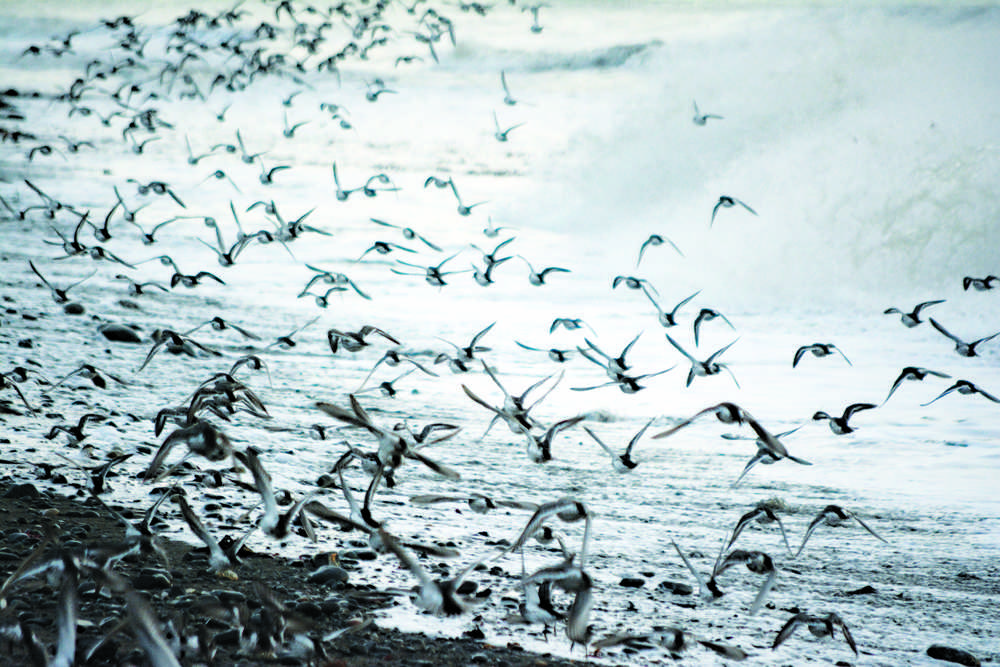Despite the recent streak of below-zero temperatures, organizers of the annual Christmas Bird Count in Soldotna are hoping people will turn out for the event this Saturday.
The annual count, part of the National Audubon Society’s Christmas Bird Count event that happens worldwide, gets people out to help gather data on birds in their communities in the early winter. Cities, towns and regions will host their own counts on a range of days between Dec. 14 and Jan. 5, 2017 and submit the data to the Audubon Society for the organization’s records. Now in its 117th year, the free event contributes citizen science that the Audubon Society uses and makes available to researchers.
Jack Sinclair, the event’s organizer this year, said participants don’t have to be experienced to get involved.
“This is really a perfect activity for people who are just starting to learn birds,” he said.
The event will begin between 9 and 10 a.m. Saturday at the Kaladi Brothers Coffee shop on Kobuk Street in Soldotna, where participants can sign up and get their assignments for where to go. They disperse and gather data on the birds they spot, then reconvene at the Kenai National Wildlife Refuge at 5 p.m. to share data, stories and a potluck, Sinclair said. Usually, between 35 and 50 people participate, with a few new participants each time, he said.
The data shows the changes in bird presence in the area over time, Sinclair said.
“You can see the differences in numbers and how they’ve changed over time and when certain birds show up,” he said.
All the bird watchers go out into areas within a 15-mile radius of a point in Soldotna at the intersection of Wendy Lane and West Blanchard Loop, which includes major bird areas such as the Kenai River Flats and the mouth of the Kasilof River. Similar counts occur in Homer and Seward, also scheduled for Saturday, according to the Audubon Society’s website.
Besides being an opportunity to gather data, the count is also a fun social event in the winter, said Ken Tarbox, a Kasilof-based birder and regular participant. There’s also excitement in the chance of spotting a rare bird. Tarbox said an ivory gull, usually associated with icepack, showed up in Soldotna one year.
“Whenever you’re in the middle of winter in Alaska, you’re always looking for rare birds, but the count very seldom here in our area finds a rare bird,” he said. “But there’s a lot of neat resident birds out there to look at. Just a few days ago, on the north bank of the Kasilof River, there were over 1,000 rock sand pipers.
The data can make a difference, too. Recently, data that birders gathered on the shorebirds’ use of the Kasilof River estuary played into an Alaska Department of Natural Resources Division of Mining, Land and Water decision on how to develop a parking lot on the north side of the mouth. Data also contributes to providing a long-term picture of how bird behaviors are changing over time in response to climate or other environmental factors.
Sinclair, who said he’s been participating in the Soldotna-area Christmas Bird Count since 1990 and participated in Seward before that, said the now-common northwestern crows didn’t start showing up until about a decade ago. He said it was possibly due to increased urbanization.
Tarbox said he’d also seen the increase in northwestern crow presence since he arrived on the peninsula in 1980. Homer had them first, but then they gradually migrated north. As the climate changes, the birds’ habits do too, he said.
“As you’re watching (climate) changes, good or bad is a human construct,” he said. “It’s going to change, so if it’s bad, it’s because it somehow impacts us in a negative way. Birds are just knowing it’s warmer and (think), ‘There’s bugs up here and we can eat them.’”
The event is a great way for people to get into birding, which people can do anywhere, even in urban environments, Tarbox said.
“That’s the thing about birding,” he said. “No matter where you go, you can bird. If you’re into being an observer of nature … there’s always someplace to see something no matter where you’re at.”
Reach Elizabeth Earl at elizabeth.earl@peninsulaclarion.com.

